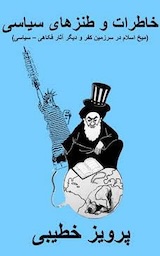The New Yorker:
In the memoir “An Honest Woman,” Shane uses her experience selling sex as the basis for a sustained meditation on male-female relations.
By Lili Owen RowCharlotte Shane was twenty-one and a graduate student when she started selling private sex shows on a Web site called Flirt4Free, in the early two-thousands. “I was a disaster on-screen: green, graceless, with a body too long and too soft,” Shane writes in “An Honest Woman,” in which she chronicles the nearly two decades she spent as a sex worker. But the fact that she might be bad at camming was also partly the point: it was a wager with herself, a way of figuring out once and for all whether she really was desirable. Her teen-age years were defined by an intense erotic longing, foiled by the sense that she was unattractive to boys: “I reasoned that if I were accepted into environments where women were expected to be sexy . . . there must be a seed of sexiness somewhere in me.” Shane’s takings would be irrefutable proof of her worth.
The money came quickly—forty-two thousand dollars in her first year and thousands more in her second—but the rate at which it flowed exposed more about the breadth of male desire than it did about Shane’s market value. Although clients might sometimes be “compelled by obvious embellishments” of orthodox femininity—blonde hair or implants—they could be just as enthusiastic about bodies that didn’t conform to this rubric. The attention and adoration was far more sincere than it was lascivious or disturbing, as sex buyers are often made out to be. After Shane began offering her clients erotic massage, and then “full service” work (meaning all-out penetrative and oral sex), her earnings and her esteem increased. She regularly came away from clients elated by her own accomplishment: “It didn’t just feel like being good at a job. It felt like being good at being a woman.”lands
Go to link










Comments